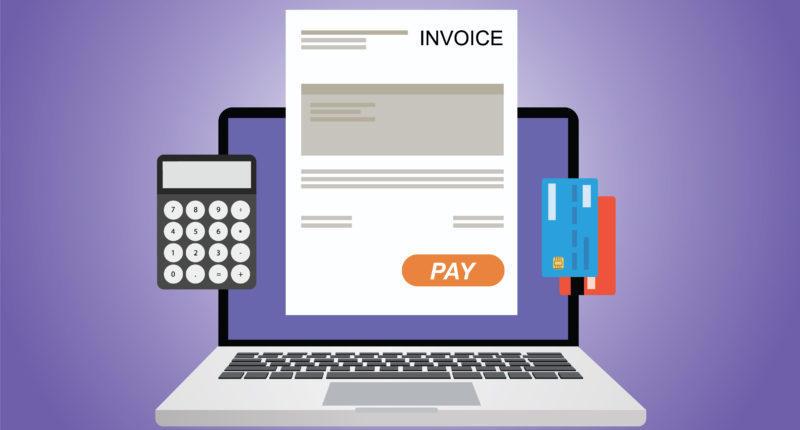E-invoicing is a new reform to be introduced from 1st October 2020. It involves the generation of invoices in an electronic format, to facilitate machine readability and interoperability across ERP and tax systems. E-invoicing will be applicable to businesses whose turnover exceeds Rs 500 crore. There are certain exemptions granted to sectors such as insurance, banking, NBFCs, GTA, passenger transportation services and cinema.
As of now, businesses generate their invoices on their accounting/billing systems or ERPs, according to the format that suits their business needs. Under e-invoicing, invoices will need to be generated as per a prescribed format which is issued by the GSTN. The invoices will continue to be generated on the taxpayer’s own ERP. The upload of these invoices to the e-invoice system and the GSTN will be through system integration or the help of an offline tool.
So what is system integration? It is the process of integrating two or more systems, i.e. their physical and/or virtual components, and ensuring that these systems function together as a whole. This is done to achieve a common end goal. In the case of e-invoicing, integration refers to the generating of invoices on the taxpayer’s ERP, then uploading the same to the e-invoice portal, and receiving the digitally signed e-invoice back into the taxpayer’s ERP once the IRN (invoice reference number) has been generated. It is a bi-directional integration as it involves data flows to the e-invoice system and then back into the taxpayer’s ERP.
Types of e-invoice integration
Taxpayers can either directly integrate their ERP systems with the e-invoice portal, or through a registered GSP (GST Suvidha Provider). If done through a GSP, there are two types of e-invoice integrations. The first is API-based (application programming interface), and the second is SFTP-based (SSH file transfer protocol).
To integrate systems directly, taxpayers will need to jump through several bureaucratic loops, before they connect their systems with the NIC. Pre-production testing will need to be carried out, with the report submitted to the e-invoice system, before beginning the process of e-invoice generation. Other cumbersome tasks associated with direct integration are adherence to the IT security standards and regulatory norms issued by the Government of India, restrictions on the number of IPs which can be whitelisted, backup connectivity, and security and encryption protocols to be followed.
Using a registered GSP like ClearTax helps overcome these obstacles as the GSP undertakes the compliance and regulatory procedures for the taxpayer. It also ensures the setup of seamless integration, continued post-integration support and dynamic upgrades in line with the GSTN’s latest updates. Let’s take a look at API-based and SFTP-based system integration in detail:
1. API-based integration
API-based integration involves the transfer of data directly from the taxpayer’s ERP. The data gets sent to the e-invoice system in real-time, processed, and the resulting output gets stored back in the ERP itself. It enables taxpayers to generate and cancel e-invoices from their ERP directly.
API-based integration involves a higher one-time cost as compared to any other type of integration. It also involves a minimal manual effort to be undertaken once the integration is completed, thereby reducing the chances of human error as well in the data processing.
2. SFTP-based integration
SFTP-based integration involves the pushing of data from the taxpayer’s ERP into an SFTP folder. Once the data has been pushed to the SFTP folder, the ASP (application service provider) processes it further in batches and at frequent intervals. It is less expensive to integrate ERPs using the SFTP mode as most of the data processing occurs outside the taxpayer’s ERP.
Also Read: E-invoicing: A potential game-changer in GST that early trends suggest
SFTP-based integration is a cheaper mode of integration when compared to API-based integration. It also involves more manual effort in the e-invoice process and hence a higher chance of human errors. On the contrary, it could be considered to be a more secure mode of integration for a taxpayer who does not want deep changes made to his ERP for security reasons.
Here is a table which displays a detailed comparison of the integration options available:
| Criteria | Direct Integration (By the taxpayer) | SFTP-based Integration (Through a GSP) | API-based Integration (Through a GSP) |
| Description | Direct integration with the taxpayer’s ERP where data gets pushed from the ERP to the e-invoice system to generate the IRN. | Integration through a GST Suvidha Provider (GSP) where data gets pushed in batch mode to an SFTP folder, and further picked by an ASP for process on the e-invoice system. The results get stored back in the same SFTP folder which can be accessed by the taxpayer. | Integration through a GST Suvidha Provider (GSP) where data gets picked directly from the taxpayer’s ERP on a near real-time basis, and processed further on the e-invoice system. The results get updated back in the ERP in real-time. |
| ERPs integrated with | SAP, Microsoft Dynamics, Oracle, Tally or any custom ERP | Windows, Linux or any client FTP server | |
| Frequency of IRN/e-invoice Generation | In real-time | In batches (can be set up daily/hourly, as required) | In real-time |
| Configuration changes made to the ERP | Deep changes required | Some changes required | Deep changes required |
| Implementation Timeline | 6-8 weeks* | 1 week | 4-6 weeks* |
| Cost of Integration | 5 lakh onward* | 1.5 lakh onward* | 3 lakh onward* |
| Time/Effort Saved | Low manual effort | Low manual effort | No manual effort |
| Chance of human error | Low | Low | No human intervention |
| Security Protocols Followed | Dependent on the client/ERP | HTTPS (TLS 1.2) | FTP, SFTP, FTPS, FTPES |
| Data is extracted from | Client ERP | Client ERP | Client FTP server |
| Scalability | Dependent on the client/ERP | Highly scalable | Limitations on scalability |
* The cost and time required for integration can vary significantly based on the ERP and business’ requirements.
Parameters to help in selecting the type of e-invoice integration
Based on the comparison table above, a taxpayer can decide which integration option is most suited for their business needs. Some of the parameters which will help in decision-making are:
- No. of GSTINs/Volume of invoices – This plays a massive role in deciding whether to opt for system integration in the first place, and the type of system integration necessary for seamless invoice generation.
- Need for a real-time generation – The business’ preference to generate and cancel invoices in real-time or whether a time-lapse is feasible or not, needs to be evaluated.
- Level of automation desired – A high level of automation could result in a low chance of human error. It all depends on the organisation’s desire and the usual business practices followed, that typically involve a human intervention or complete automation, as the case may be.
- Industry-specific norms and stakeholder preferences – What other companies in the same sector follow and the stakeholder’s requirements need to be taken into consideration.
- Security protocols – Some companies may not be able to undertake significant changes in their ERPs due to strict security measures in the organisation as a whole. The batch process of data from external folders might be feasible in these cases.
Cost – Even though integration involves one-time charges, it could still be the deciding factor as the prices vary significantly depending on the type of integration. The business should also find out the expenditure required for continued maintenance of the ERP infrastructure post-integration.
For any clarifications/feedback on the topic, please contact the writer at athena.rebello@cleartax.in

I’m a Chartered Accountant by profession and a writer by passion. ClearTax lets me be both. I love travel, hot tubs, and coffee. I believe that life is short, so I always eat dessert first. Wait.. life is also too short to be reading bios… Go read my articles!





